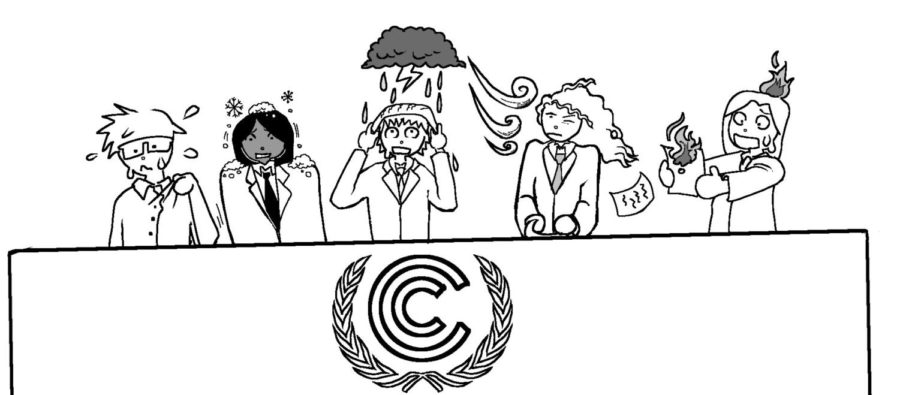Temperature Check
The climate change news you’re sick of reading about.
There’s nothing as surreal as watching the seemingly far-off effects of climate change descend on your hometown. Climate change is no longer an event happening across the world; a horrific but disconnected experience that we can watch on our TVs and then walk away. Now it’s undeniably affecting Seattle.
Temperatures continue to climb to new record-breaking extremes in the winter and summer months. Kids no longer have to pray for snow every winter because consistent below-freezing temperatures are expected. During the wildfire season, it’s become a habit to check the air quality before stepping outside. Air conditioner units, a once-foreign thing to Seattlelites, are a smart investment for many homes.
Many will remember the heat wave in late June 2021, which marked three of the hottest days ever recorded in Seattle’s history, and a turning point for the temperature extremes we should expect in the future. After a record-breaking summer, dangerously cold temperatures swept into Washington in December, prompting emergency orders from Durkan to staff warming shelters around Seattle. Often legislation rolls in too late to properly adapt to rapidly increasing climate emergencies.
“I have never seen the impacts of climate change that we are now facing,” former Mayor Jenny Durkan said this summer when she announced an executive order to cut Seattle’s emissions 27% by 2050.
This winter’s severe weather culminates a year of escalating climate change around the globe. In February, three major winter storms in Texas caused statewide power outages that left 10 million people without electricity. Month-long droughts in Canada, Washington, Oregon and California this summer fueled wildfires that destroyed over 7.6 million acres. In August, Hurricane Ida tore through the South with Category 4 force and killed 82 people. Heavy rainfall in Germany, China and Australia caused flooding that killed hundreds and cost billions in damage. To cap it all off, 2021 was Earth’s fifth hottest year on record, according to European Union scientists.
The bright light at the end of the tunnel of never-ending climate disasters in 2021 was the COP26 Climate Summit in Glasgow, Scotland. Policymakers, activists, and scientists from around the world met for two weeks in November to discuss and draft new goals to prevent the worst effects of climate change – mass relocation, food scarcity, ecosystem collapse and destruction of property, to name a few – many of which are already occurring at a larger scale in developing countries. By the end of the conference, 197 countries agreed to the Glasgow Climate Pact. In short, the Pact consists of a slew of acknowledgements about the dangers of global temperatures rising more than 1.5 Celsius (2.5 Fahrenheit). It urged countries to update climate change adaptation and mitigation plans, recognized the necessity to transition towards sustainable development, and emphasized the need for international collaboration in global climate crises.
The Glasgow Climate Pact is not legally binding, and while 151 countries at the summit submitted new emission-cutting plans, climate analysts have determined that many aren’t nearly drastic enough to avoid more than a 1.5 Celsius rise – this disparity between country’s promises and their concrete plans are known as “credibility gaps”. In response, the countries at COP26 pledged to strengthen their 2030 emission goals by the end of 2022 to match their temperature targets. But it raises some questions: Why didn’t countries submit revised goals for 2030 at COP26? How much longer will countries deliberate before they write effective legislation? Each country’s deliverance on their COP26 agreements is yet to be determined. Avoiding a future of climate collapse is up to individual governments to put climate action at the top of their agenda, and for citizens to hold them accountable.





